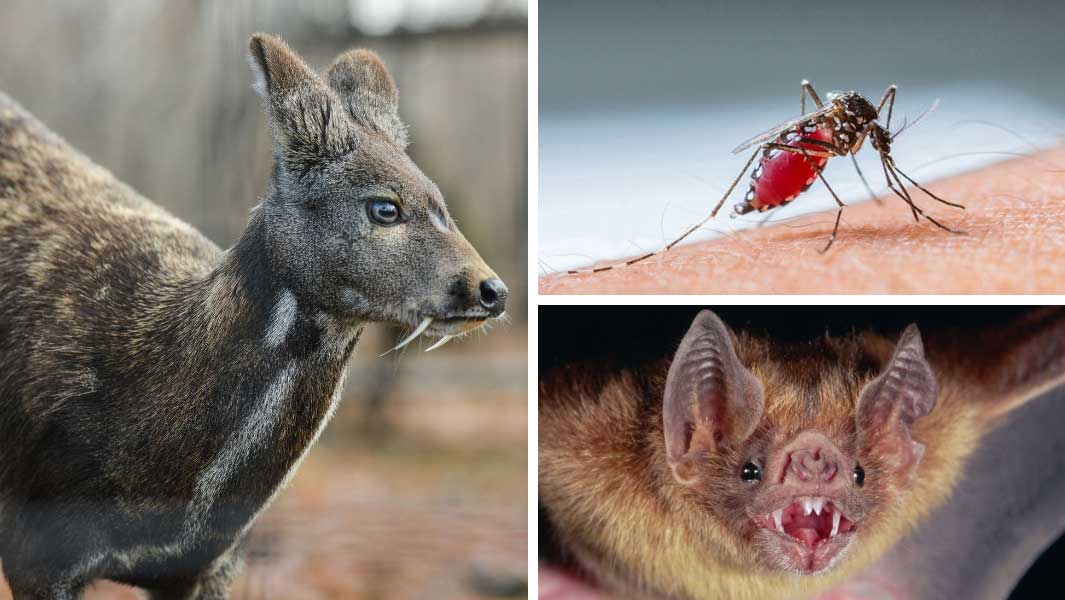Wild vampires: The bloodthirsty animals which give Dracula a run for his money this Halloween

In the spirit of Halloween, we have rounded up four real-life “vampires” from the animal kingdom, all of which star in Guinness World Records: Wild Things.
Find out why vampirish creatures are not always what they seem and why sometimes they’re even more dangerous than you might think… Stake, cross and garlic: not required.

Vampire bat
Bats have long been linked with Count Dracula, but there’s only one type that exclusively feeds on blood. All three species of vampire bat live in Latin America.
They seldom attack humans – much preferring livestock such as cows and goats that barely notice the fly-by diners. With only 20 gnashers, they actually have the Fewest teeth for a bat (about half that of other species). But they generally only need their two razor-sharp incisors to make a small, deep nip in their victim’s skin.
A special enzyme in their saliva prevents the blood from clotting, allowing it to flow freely until they’ve had their fill. As horrifying as it might sound, they generally only drink about a tablespoon of blood. The much bigger threat comes from diseases they may be carrying, such as rabies.

Vampire finch
Bats aren’t the only animals to have been named in honour of the supernatural blood-sucker.
In the Galápagos islands, off Ecuador, nesting seabirds occasionally fall prey to the vampire ground finch – the Most bloodthirsty bird.
While most of their diet consists of seeds and bugs – like the majority of the finch fraternity – now and then they get a thirst for the red stuff, using their sharp beaks to peck a shallow wound. They do this not so much for food as for liquid, as freshwater is scarce on their native islands.

Musk deer
Bambi – what big teeth you’ve got!But sometimes looks can be deceptive – in more ways than one…
Firstly, this isn’t technically a “deer” but a musk deer – a distinct family separate from the “true deer” (cervids). Pictured is a Siberian musk deer, the Most common member of the clan.
And despite those fine “fangs” (actually tusks) – a trait shared by all male musk deer – these herbivores aren’t vampires either. Instead, the sharp canines are used to resolve disputes in place of the more traditional antlers. It just goes to show: never judge a book by its cover, or indeed a “deer” by its “fangs”!

Anopheles mosquito
If asked to imagine the world’s Deadliest animal, most people would picture a great white shark, a crocodile, a venomous snake or perhaps even a rampaging elephant or hippo.
But by far the biggest killer has no teeth, no venom and certainly no great size on its side.
Female Anopheles mosquitoes can be vectors (i.e., carriers) of tiny parasites called Plasmodium. When the bug sips our blood – typically slurping no more than 3 mg in a sitting – Plasmodium can be left behind.
After several days in the human host, the parasites can cause malaria, as they start to attack the body’s red blood cells. Malaria claims a devastating number of lives – as many as 750,000–1 million every year, easily making the mosquito-Plasmodium pair the dual deadliest animals.
You can learn more about these and other dangerous animals in Guinness World Records: Wild Things which is out now. There are also animal-themed Halloween activities for you to try on the worksheet below.



